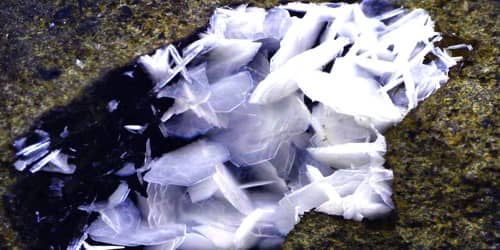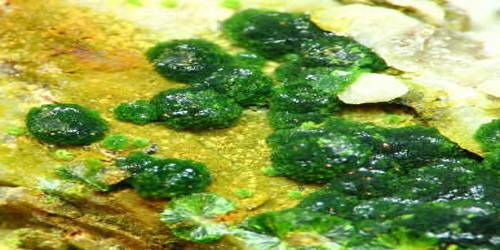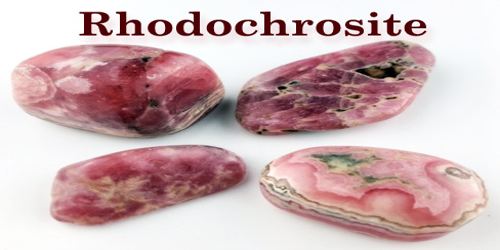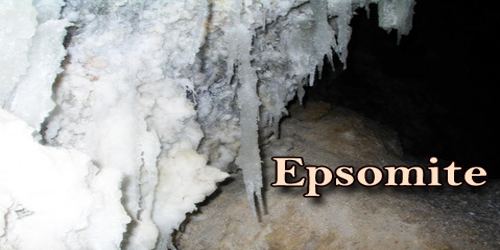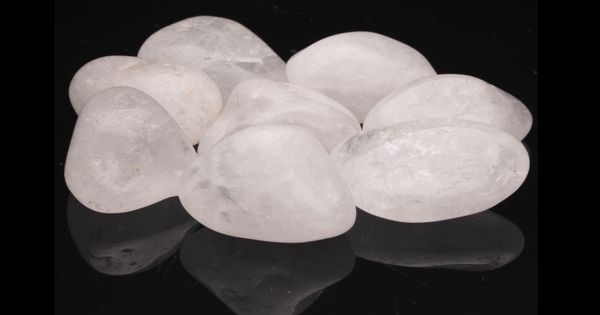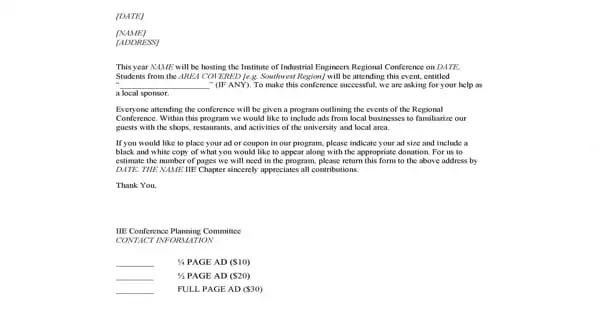Levyne or levynite is a zeolite mineral, i.e. a hydrated silicate mineral. It is a whitish, reddish, or yellowish, transparent or translucent mineral, allied to chabazite. Levyne crystallizes in the Trigonal – Hexagonal Scalenohedral class. It typically occurs as radiating clusters or fibrous masses that are transparent to translucent in colors ranging from white through reddish and yellowish-white to gray.
There are two forms of levyne:
- Levyne-Na, the sodium dominated form (Na2, Ca, K2) Al2Si4 O126(H2O); and
- Levyne-Ca the calcium dominated form (Ca, Na2, K2) Al2Si4O126(H2O)
It was named for French mineralogist Armand Lévy (1795–1841).
General Information
- Category: Zeolite
- Crystal system: Trigonal
- Colour: White
- Transparency: Transparent.
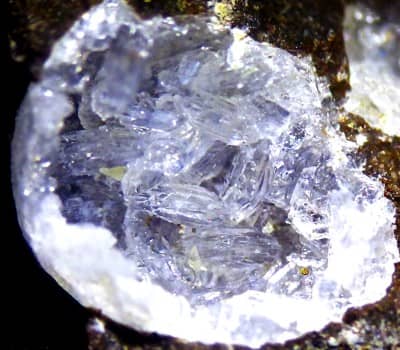
Properties
It has a specific gravity of 2.09 – 2.16 and a Mohs hardness of 4.0 to 4.5. It has a vitreous luster and perfect cleavage on [1011]. Typical occurrence is as an alteration and vesicle filling mineral in basalts.
- Luster: Vitreous
- Streak: White
- Hardness: 4 – 4½ on the Mohs scale
- Cleavage: Perfect, Perfect on the {1011}
- Density: 2.09 – 2.16 g/cm3 (Measured) and 2.17 g/cm3 (Calculated)
Occurrence: Typically as a crystalline lining in cavities in basalts.
The calcium variety was first described in 1821 for an occurrence in Dalsnipa, Sandoy, Faroe Islands. The sodium variety was described in 1997 for an occurrence in Chojabaru, Nagasaki Prefecture, Japan.
Association: Zeolites, especially o®retite and erionite.
Information Source:
